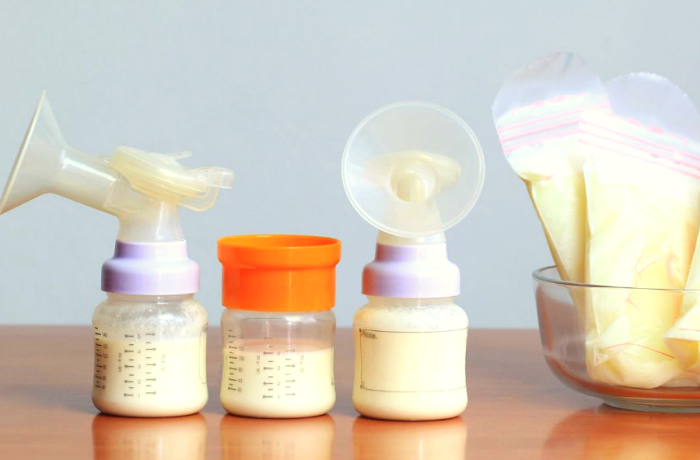1 Plan and 5 Tips to Instill Good Habits in Your Preschooler
by on 02/08/2025 ...

Since two-and-a-half, my daughter Olivia was enrolled to a daycare so that mommy gets a break in the morning. After a few weeks of feeling anxious separating from mommy dearest, she understood the idea that mommy will come back and she was in a secured environment. Each morning, she waived good bye and took separation on her stride. Well done, my two-year-old!
As I thought things would just become easier for both of us, our morning routine had gone the opposite way after she turned three years old. Olivia started to get whinny about going to the daycare; later, she screamed and yelled, begged and cried, tried all her tricks to prolong her time to be at home, including of wanting to eat breakfast at home, changing her underwear that she had just worn. No treat (even sweets!) or punishment work this time. After two months of tug-of-war between daughter and mom, I pulled her out of the daycare to save myself from getting mad every morning. She has decided that the activities there were not to her liking anymore, she would rather stay at home for more challenging things.
Few months later as the first day of kindergarten was approaching, the dreadful experience of dragging Olivia out of the bed and out of the house came haunting me again. It is the beginning of her lifelong journey of learning, there is no way I wanted her to hate school. I vowed to make our morning routine a success!
I chanced upon a parenting book called The Kazdin Method for Parenting the Defiant Child, by child psychologist Alan E. Kazdin. It offered a plan that sounded workable to me.
First of all, it helps if parents are mindful that there are three sequences in our interaction with children when we demand certain behaviour from them. Number one in the sequence is antecedent; it is an action that comes before a behaviour, such as asking Olivia “Would you finish up your breakfast and change?” Number two in the sequence is behaviour, which is Olivia goes to change or she doesn’t want to change. Number three in the sequence is consequence, Olivia gets a praise “Well done, you changed and you are ready to go!” or in the later case, the situation escalated to the next level of tension, Olivia gets scolding or a time-out for not being cooperative.
It is simply ABC:
- A for antecedent
- B for behaviour
- C for consequence
Here goes my plan of setting up a successful morning routine for Olivia.
First, a reward chart that looks like a monthly calendar is drawn. I include a ‘to-do-list’ by the chart to make it visual to her what are the things to do before she goes to school; getting up from bed, brushing her teeth, eating breakfast, washing up and getting dressed, getting into the car. It is important to breakdown a seemingly huge task into small, concrete steps for kids.
Step two is to explain how the plan works and practice it. I sit down with Olivia and explain those are the things she will be doing in the morning, and if she does all of them, she will get a check (Ö) or a stamp in the box. With three consecutive stamps or checks, she will get a reward. Then, we play-pretend to give the plan a trial run.
Step three in the plan is to carry out the actual plan. Parents should try to arrange the situation so that it is conducive to the behaviour, making it more likely to happen. Olivia’s favourite breakfast is prepared for the first week, she gets to choose her own outfit (although sometimes it is really awkward, but I bit my tongue from commenting), and her favourite CD is played in the car.
Step four, reward your child. The immediate reward of completing the morning routine is putting her favourite stamp on the chart. This gives incredible sense of achievement to preschoolers. After three days, Olivia gets her tangible reward for being cooperative. My choice of reward is usually a small toy or a sticker but rarely food to avoid traps later. My daughter will slowly lose interest in toys, but she never gets enough of chocolates and ice creams. Why three days is chosen instead of five days of school in a week? Because I find three days is long enough to build a habit and short enough for preschoolers to see the success as an immediate effect of their effort.
We work on this plan for more than a month until I am convinced that she has internalised the idea. The reward chat is still up on the wall, from time to time if she gets fussy in the morning, I’ll start the three-stamps-one-prize trick again!
The same plan can be used if you wish to break undesirable behaviours or instill good habits at your home. I’ve shared with some parents and they have varying degree of success in carrying out this plan. They called it the “three-stars-program”.
Here’s some tips for you to make the plan a success.
- Set up a conducive environment for the behaviour. If your goal is to have a smooth bedtime routine, avoid activities that might arouse excitement in your kids. A calming environment, a warm bath, a bedtime story and your undivided attention would increase the chance of success.
- Give verbal praise enthusiastically. Make it very specific what your child do that you like. Praise her immediately so she could link the behaviour to the reward. And yes, although intangible, verbal praise is a reward to them because you are giving assurance to your child’s behaviour.
- Break tasks into smaller and concrete steps. Instead of saying “I want you to be cooperative in the morning”, be specific on what are the steps she could take to be cooperative. Putting up a “to-do-list” and phrase the sentences positively will be helpful to your concrete preschoolers.
- Set lower expectation. If your goal is to get your preschoolers to school on time now, perhaps you could leave the task on “getting dressed by yourself” out of the plan first. Help your child to become successful by not expecting too much from her at the beginning.
- Do not compromise and follow through the plan for at least 3 weeks. Research has shown that to make a new behaviour a habit, a child needs at least three weeks to inernalise what they learned. If your child was not cooperative but demands for a check, simply refuse her and say “you will have another chance tomorrow.” Do not stress on the misbehaviour and let it go.
Whatever challenge that you might be facing, take a step back, get to the bottom of the problem and assess the root cause before rolling out a plan. I know Olivia will enjoy the activities in the kindergarten; I make sure she has enough rest before her hectic day. These are the prerequisites of a successful morning routine. Had she found going to school a chore, or she does not have enough stamina to last for the stimulating 5-hours, none of these seemingly wonderful plan would work at all!
About the writer:
Jamie Hoo is a school -teacher-turned-stay-at-home- mom. She lives in Saudi Arabia with her husband and a four years old daughter.

































